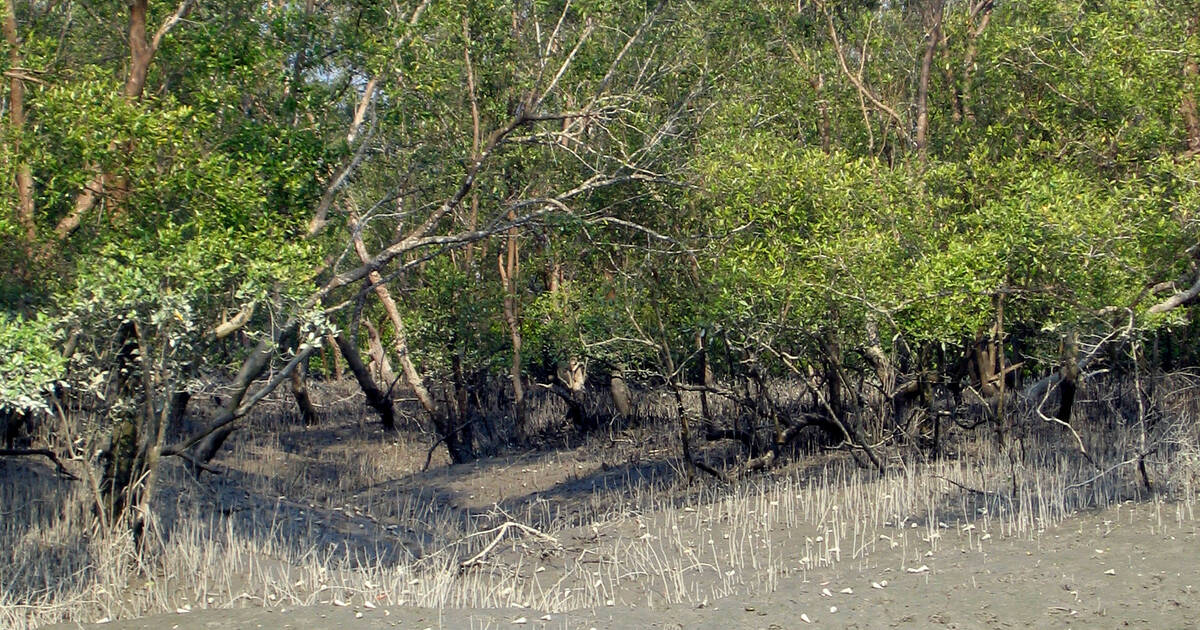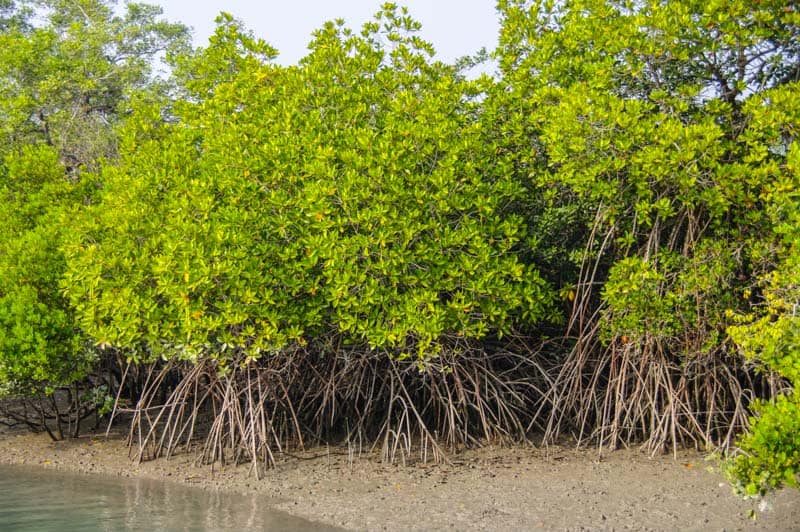The Sundari Tree’s True History: Sundari trees, after which the mangrove forest is called, are in danger of going extinct in West Bengal as a result of overharvesting of its high-value wood in the past and current sea level rise.
The Sundarbans, the biggest continuous mangrove forest in the world, located in the eastern states of West Bengal, India, and Bangladesh, are the namesake of the Sundari, whose history is almost as rich. Sundari is just as elusive as this place’s most famous inhabitant, the Bengal tiger. Lets know about The Sundari Tree’s True History.

The only method to visit the deep mangrove forest, which is also a declared national park, tiger reserve, and biosphere reserve mostly from October to May before the intense monsoon storms, is by boat, and even spending days on the water, one may not see either of the two emblematic animals here. Ironically, the International Union for Conservation of Nature (IUCN) Red List of Threatened Species has listed both species as endangered.
However, one species is completely in the public eye, with millions spent on its protection and conservation, while the other perishes quietly, unnoticed, and unrecognized. If you’re wondering which is which, the Sundari tree regrettably struggles to maintain its position whereas the Bengal tiger is the former.
Sundari is Bengali for “the lovely.” And very few people now would remember that the mangrove forest itself is named after the formerly numerous Sundari tree, a UNESCO World Heritage Site. Lets know about The Sundari Tree’s True History.
In Bangladesh and India’s Sundarbans, the Sundari mangrove tree species predominate. It is a species of mangrove in the Malvaceae family and is referred to by its scientific name, Heritiera fomes. The Sundari tree may reach heights of up to 60 feet and girths of six feet. The tall, robust tree, which has elliptic-shaped leaves and fruit that is rich in micronutrients, is endangered by overharvesting, a rise in salinity that results from water diversions in the Ganges Basin, coastal expansion, and a disease called top-dying.

According to a Dhaka Tribune article from July 2018, “top-dying sickness” has claimed the lives of 1.44 million cubic meters of Sundari trees over the past 30 years, costing 2,000 crores of Bangladeshi Taka.
It is a significant timbre-producing tree with uses in traditional folk medicine, as shown by the widespread usage of the locals and traditional healers in the treatment of diabetes, hepatic illnesses, gastrointestinal disorders, goitre, and skin ailments. The Sundari tree has been shown to have strong antioxidant, antinociceptive, antihyperglycemic, antibacterial, and anticancer properties, according to a number of studies. Lets know about The Sundari Tree’s True History.
The species is currently in danger of going extinct in West Bengal as a result of historical over-logging for its valuable wood and the current sea level rise. As the species has a lesser tolerance for salty seawater and there aren’t many highlands remaining, especially on the Indian section of the Sundarbans, it is quite difficult to find a Sundari tree there. In addition to raising ocean salinity, global warming has also raised surface temperatures, according to Santhosha Gubbi, IFS, Divisional Forest Officer, Sunderban Biosphere Reserve.

Illegal logging of Sundari trees occurs unabatedly in the Bangladesh Sundarbans. The evil side of the wood industry in Pirojpur’s Nesarabad, the largest floating timber market, was exposed in an article written in February 2016 by Habibur Rahman and Andrew Eagle for the Daily Star. Lets know about The Sundari Tree’s True History.
Sundari logs were publicly traded prior to 1985 when the species was protected and the falling, selling, and shipping of Sundari logs were outlawed in reaction to the species’ dwindling population. Their sale has continued for 31 years, according to the article.
According to one source, “smugglers utilize a variety of strategies. Sometimes Sundari logs are wrapped with coconut coir, bags, or other merchandise to prevent detection. There is money to be made since Sundari timber sells for between 400 and 1500 Bangladeshi Taka per cubic foot, depending on size.

Are you familiar with Sundari trees? If not, allow me to explain. The most well-known tree in the Sundarbans is the Sundari tree. The fact that Sundarban is called after Sundari trees is the finest aspect. You may find a sizable number of these trees as you enter Sundarban. They turn the Sundarban into a lush, gorgeous landscape. Lets us know about The Sundari Tree’s True History.
However, unlike Sundarban, the tale behind these trees is not at all upbeat or comforting. Sundari trees are extremely strong and well-built. They have long been utilized by people as sources of timber. They were being annihilated in this way. Nevertheless, seawater is harming plants and depleting the soil. This is not a positive development for Sundarban. Whatever the cause, if the trees begin to disappear in this way and so quickly, Sundarban may soon find itself in a dangerous situation.
We need to protect these Sundari trees:
1. These Sundari trees require government attention.
2. The locals need to be informed of the threat.
3. The Forest Department needs to act quickly.
4. Sundari trees have strong, long lives.
5. Information needs to be shared.
Why don’t you take adequate care of these trees when we all know how crucial they are to the Sundarban? The key to preserving these trees is awareness. We all know that UNESCO safeguards Sundarban, and because of such safeguarding, The Royal Bengal Tiger was preserved. Why not the Sundari trees then? With the right planning and care, the Sundari trees may also be conserved and protected.
Save the Trees:
The government must take measures to safeguard the trees and save them with the necessary care. This is crucial, and it needs to be completed properly.
We have Sundarban Tour Packages every day
For Booking Of Best Sundarban Package( Starting from 2799/-)
Name: Dilip MAity
Organization: Royal Sundarban Tourism
Organisations Web link: https://royalsundarbantourism.com/
Contact: +917439965413 / 8584838109
Gpay / Phone pay : 9804049535
Email: info@royalsundarbantourism.com
Address: Tiger More, Gosaba, Pakhiralay, Pakhiralay Main road, District- 24 Parganas South, West Bengal 743370


